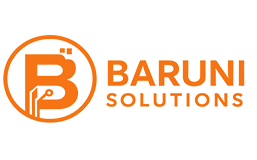Trusted by startups and Fortune companies
Our Asset Management Solutions
Diving deeper than the standard, our asset management solutions offer distinctive features tailored to precisely meet our clients' goals.
Software Consulting
We embark on a comprehensive asset management needs analysis, laying the groundwork for tailor-made software with a resilient architecture and infrastructure.
- Risk management plan
- Cost and budget estimation
- Software and hardware prerequisites
Asset Tracking & Performance
We are committed to enhancing asset productivity, minimizing downtime, and optimizing asset utilization through our cutting-edge asset performance software.
- Reduced asset loss
- Streamlined asset expenditure
- Enhanced productivity levels
Asset Planning & Optimization
Our asset management software facilitates precise planning and optimization of asset utilization scenarios, while also aiding in asset investment planning.
- Increased Overall Equipment Effectiveness (OEE)
- Decreased capital investment
- Optimization of asset utilization
Asset Maintenance Management
With our asset maintenance management software, we empower you to optimize asset maintenance while providing real-time monitoring of all asset
operations.
- Fewer asset breakdowns
- Reduced maintenance costs
- Fewer scheduled repairs
Asset Implementation & Support
From solution conceptualization to design, Quality Assurance (QA), Proof of Concept (PoC) implementation, and integration of asset management components into existing ecosystems, we cover it all.
- SLA-based asset management
- Ongoing monitoring and maintenance
- Asset management Key Performance Indicator (KPI) reports
Asset Portfolio Management
Our adept team ensures that your asset portfolio seamlessly aligns with your investment
objectives.
- Tracking market movements
- Gaining data insights on funds
- Accessing comprehensive market data insights
Ready to Innovate?
Let's co-create groundbreaking products together, merging your vision with our expertise for unparalleled results.
Get StartedTransformative Integrations for Modern Asset Management
Unleash the full potential of your Enterprise Asset Management Software with our comprehensive suite of essential integrations, ensuring optimal efficiency across your organization.
ERP Integration
Effortlessly streamline every aspect of asset management from procurement to disposal.
- Seamlessly integrate with existing ERP systems
- Enhance production efficiency
- Ensure comprehensive asset lifecycle management
Asset Maintenance Software
Elevate asset performance through automated maintenance processes.
- Integrate seamlessly with top asset maintenance platforms
- Automate issue reporting and resolution
- Maintain peak performance through efficient maintenance practices
Accounting Software
Ensure precision in every financial transaction and reporting.
- Flawlessly integrate data for accurate financial reporting
- Track fixed asset depreciation effectively
- Enable informed decision-making with precise financial statements
Geographic Information System
Empower your field teams with actionable geospatial
data.
- Advanced GIS integration for precise asset tracking
- Real-time access to geospatial data
- Streamline field maintenance and asset utilization
EHS Software
Effortlessly prioritize and uphold safety standards across your organization.
- Seamlessly integrate with leading EHS platforms
- Conduct efficient and timely safety inspections
- Proactively manage risks and ensure compliance
Inventory Management System
Keep your asset inventory accurate and ready for
action.
- Integrate with top inventory management systems
- Ensure timely asset replenishment
- Minimize asset downtime with precise tracking and management
The Baruni Edge in Asset Management
Catering to a wide array of clients, including startups, established enterprises, development organizations, and digital agencies, Baruni crafts bespoke asset management solutions to meet diverse requirements.
Our commitment to extending asset longevity, enhancing utilization, and maximizing ROI positions us as a trusted leader in asset management software development.
- India's Top 1% Software Talent
- Trusted by Startups to Fortune 500 companies
- End-to-end Solutions: From Concept to Deployment
- Global Presence for Time-Zone Friendly Service
- Robust Data Security Measures
- Punctual Delivery, No Unforeseen Delays
Ready to Innovate?
Let's co-create groundbreaking products together, merging your vision with our expertise for unparalleled results.
Get StartedUser Guide: Navigating Asset Management
Guide Topics
Enterprises requiring asset management solutions
Asset management solutions offer unique advantages tailored to businesses across diverse sectors. Here's a closer look at the types of businesses that stand to gain the most from such solutions:
- Precision in Production: Manufacturing Companies benefit by tracking machinery, equipment, and raw materials, ensuring streamlined production processes.
- Effective Property Oversight: Real Estate and Property Management Firms utilize asset management to efficiently manage properties, buildings, and associated facilities.
- Tech Optimization: IT and Technology Organizations optimize hardware, software licenses, servers, and other tech assets for seamless operations.
- Infrastructure Efficiency: Utilities and Energy Providers oversee infrastructure like power lines, transformers, and substations for optimal performance.
- Logistics Streamlining: Transportation and Logistics Companies manage fleets of vehicles, monitor fuel consumption, and schedule maintenance for smooth operations.
- Healthcare Equipment Tracking: Healthcare Institutions track medical equipment, instruments, and devices for enhanced patient care and safety.
- Public Infrastructure Management: Government Agencies and Public Sector Organizations efficiently manage public infrastructure, equipment, and facilities.
- Educational Resource Management: Educational Institutions track IT equipment, classroom assets, and campus facilities to support effective learning environments.
- Hospitality Asset Monitoring: Hospitality Industry entities monitor kitchen equipment, furniture, and amenities in hotels and restaurants for guest satisfaction.
- Retail Inventory Management: Retail Businesses optimize inventory, point-of-sale systems, and store assets to ensure seamless customer experiences.
- Financial Asset Oversight: Financial Institutions effectively manage IT hardware, software, and operational assets to support banking and financial services.
- Construction Equipment Tracking: Construction and Engineering Firms track machinery, equipment, and tools for efficient project execution.
- Agricultural Asset Monitoring: Agricultural Enterprises monitor farm equipment, machinery, and storage facilities for enhanced agricultural productivity.
- Media Equipment Management: Media and Broadcasting Companies oversee audio-visual equipment, cameras, and broadcasting tools for high-quality content production.
These businesses leverage asset management solutions to streamline operations, enhance productivity, and drive growth in their respective industries.
Essential Principles of Effective Asset Management
Effective asset management relies on fundamental principles that drive optimal asset utilization and maintenance. These principles encompass strategic planning, meticulous asset tracking, routine maintenance, and ongoing performance monitoring.
- Strategic Planning: Organizations strategically plan asset acquisition to align with their objectives, ensuring assets contribute to overall goals and deliver maximum value.
- Accurate Asset Tracking: Proper asset tracking facilitates efficient inventory management, preventing loss, and enabling organizations to allocate assets effectively.
- Regular Maintenance: Implementing routine maintenance schedules ensures that assets remain in prime condition, minimizing downtime, and extending their operational lifespan.
- Performance Monitoring: Continuous performance monitoring allows organizations to evaluate asset performance, identify areas for enhancement, and make informed decisions to optimize asset utilization.
- By adhering to these guiding principles: Organizations can achieve effective asset management, leading to improved operational efficiency, reduced costs, and enhanced return on investment.
Crafting an Asset Management Strategy

Forging an Asset Management Strategy involves sculpting a comprehensive blueprint to harness the full potential of assets within an organization. This strategic endeavor entails several distinctive elements:
- Asset Portfolio Mastery: Conducting an exhaustive inventory to unearth and categorize all organizational assets with precision.
- Lifecycle Roadmapping: Crafting a strategic trajectory for each asset, encompassing its inception, maintenance regimen, and eventual phase-out or renewal.
- Risk Terrain Exploration: Delving into potential risks intertwined with asset stewardship, ranging from upkeep expenses to regulatory compliance and technological evolution.
- Performance Tapestry Weaving: Instituting robust mechanisms to monitor and evaluate asset performance, weaving together a rich fabric of metrics and key performance indicators.
- Financial Navigational Charting: Charting a course through fiscal waters by factoring in budget allocations for asset acquisition, upkeep, and enhancement endeavors.
- Continuous Evolutionary Sculpting: Sculpting a culture of perpetual improvement, fostering a dynamic environment where the asset management strategy evolves in tandem with shifting organizational needs and technological advancements.
- By sculpting a uniquely tailored asset management strategy: Organizations can unlock the full spectrum of benefits, from optimized asset utilization to fortified decision-making capabilities, propelling them towards operational excellence.
Optimal Approaches to Asset Tracking and Inventory Management

To ensure organizations uphold accurate records, maximize asset utilization, and streamline operations, implementing effective asset tracking and inventory management practices is paramount. Here are several recommended strategies:
- Centralize asset management data to encompass details like location, ownership, maintenance history, and documentation.
- Utilize unique identification numbers or barcodes to facilitate straightforward asset tracking, mitigating errors during inventory audits or asset movements.
- Conduct routine physical audits to verify asset database accuracy and detect any discrepancies or missing assets.
- Employ software or systems equipped with real-time tracking technologies such as RFID, QR codes, or GPS for precise and efficient asset monitoring.
- Establish a proactive maintenance schedule to effectively manage assets, conducting inspections, servicing, and upgrades to prevent breakdowns and prolong asset lifespan.
- Standardize asset acquisition and disposal processes to enhance efficiency and ensure compliance with regulations.
- Provide staff training on asset management to guarantee proficient tracking, accurate data input, and adherence to best practices.
The Significance of Technology in Contemporary Asset Management
In today's asset management landscape, technology plays an indispensable role, reshaping the way organizations monitor, maintain, and enhance their assets. Innovative asset tracking solutions like RFID and GPS not only bolster real-time visibility but also empower organizations with unprecedented control over their asset inventory.
With the advent of IoT sensors, predictive maintenance has become a game-changer, allowing organizations to detect and address issues before they escalate, thus minimizing downtime and maximizing asset uptime. Centralized asset management platforms offer a holistic view of asset data, streamlining operational workflows and facilitating better decision-making.
Moreover, the integration of mobile applications and remote access capabilities enables field technicians to efficiently manage assets on the go, ensuring prompt response to maintenance needs and operational challenges. Harnessing the power of data analytics and seamless integration with existing business systems provides organizations with actionable insights, enabling them to optimize asset utilization and drive continuous improvement.
By embracing technology-driven asset management solutions, organizations can unlock new levels of efficiency, cost-effectiveness, and operational excellence, positioning themselves for sustained success in today's dynamic business environment.
By following these steps, businesses can effectively onboard a dedicated development team and set the stage for a successful collaboration.
Managing Risk in Asset Management
Effectively managing asset risks is vital for sustaining performance. Here's how:
- Identify and assess potential threats.
- Prioritize risks and allocate resources wisely.
- Implement preventive measures and contingency plans.
- Diversify asset portfolios for resilience.
- Monitor indicators and report insights.
- Obtain suitable insurance coverage.
- Stay compliant with regulations.
- Utilize analytics for informed decisions.
By following these steps, organizations can safeguard asset value and ensure long-term success.
By following these steps, businesses can effectively onboard a dedicated development team and set the stage for a successful collaboration.
Frequently Asked Questions
- Enterprise asset management
- Financial asset management
- IT asset management
- Infrastructure asset management
These solutions are crafted to meet your specific needs and drive business growth effectively.
- Assessment phase: Evaluate your current setup and identify necessary changes and suitable technologies.
- Implementation phase: Execute changes identified in the assessment phase through meticulous planning.
- Maintenance and evolution phase: Develop a plan for ongoing maintenance and adaptation to market shifts.
Client Feedback on Our Services
We sincerely appreciate the trust our clients place in us and take pride in providing quality solutions that surpass their expectations. Here's what some of them have to say about their experiences:






